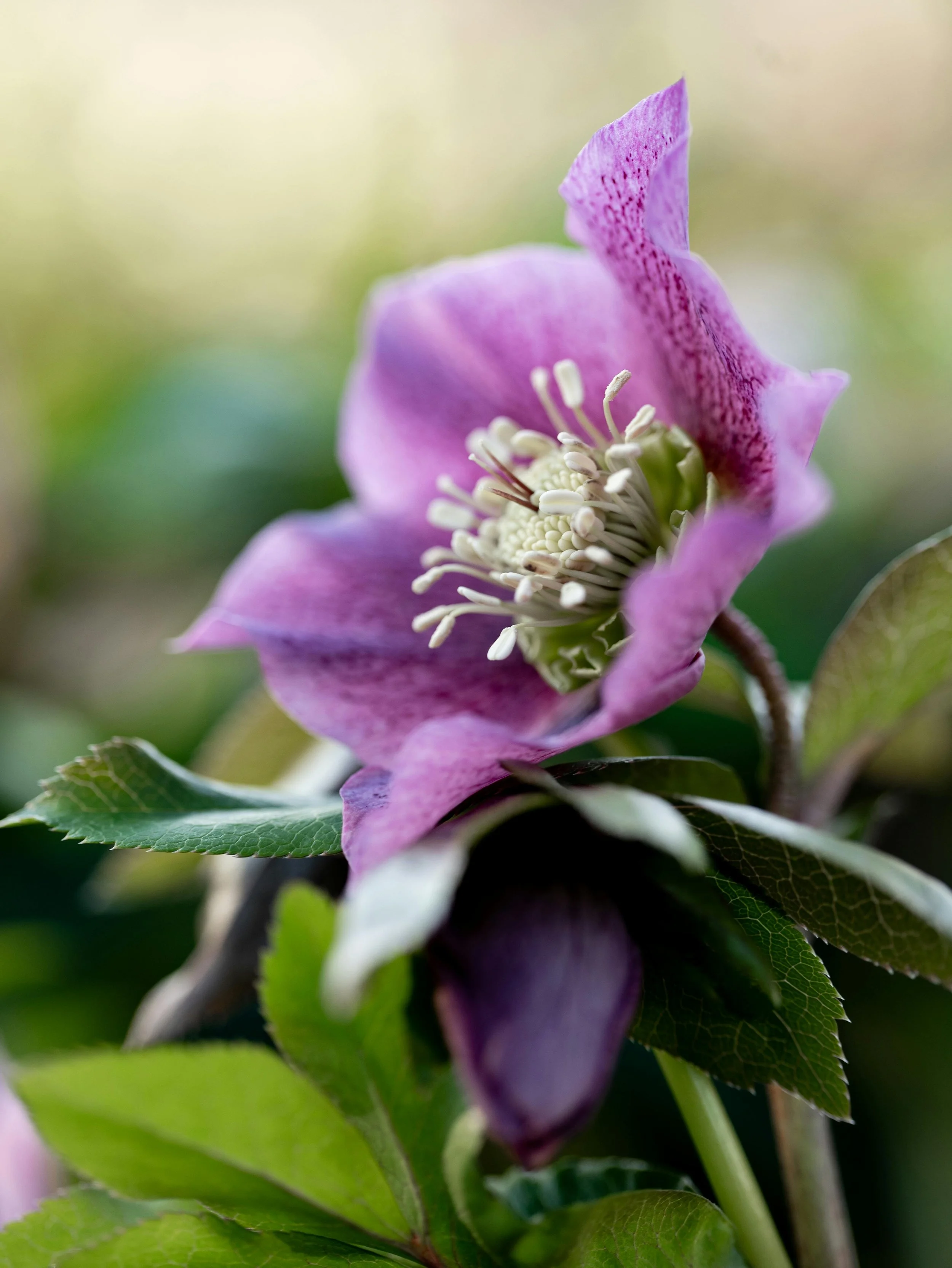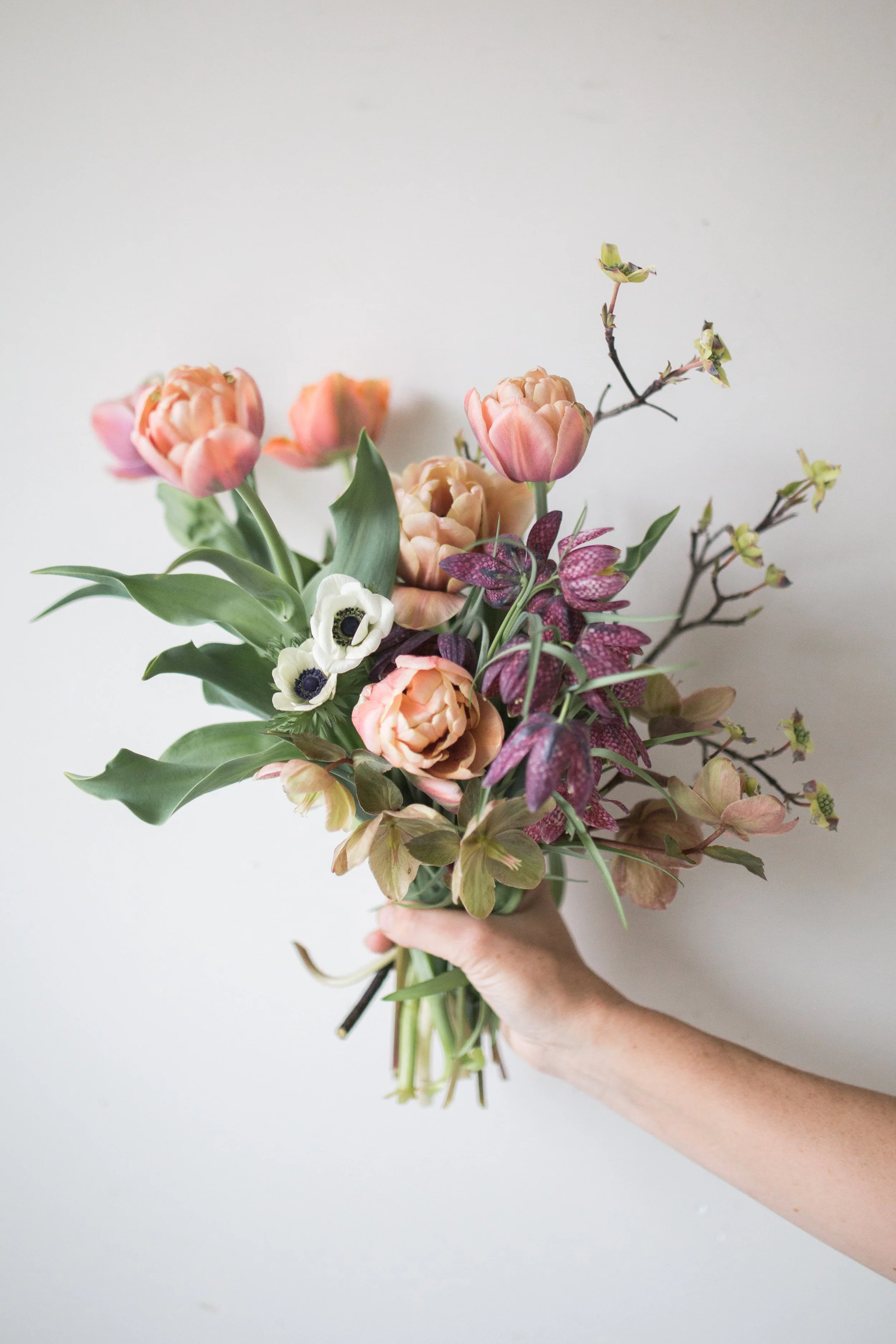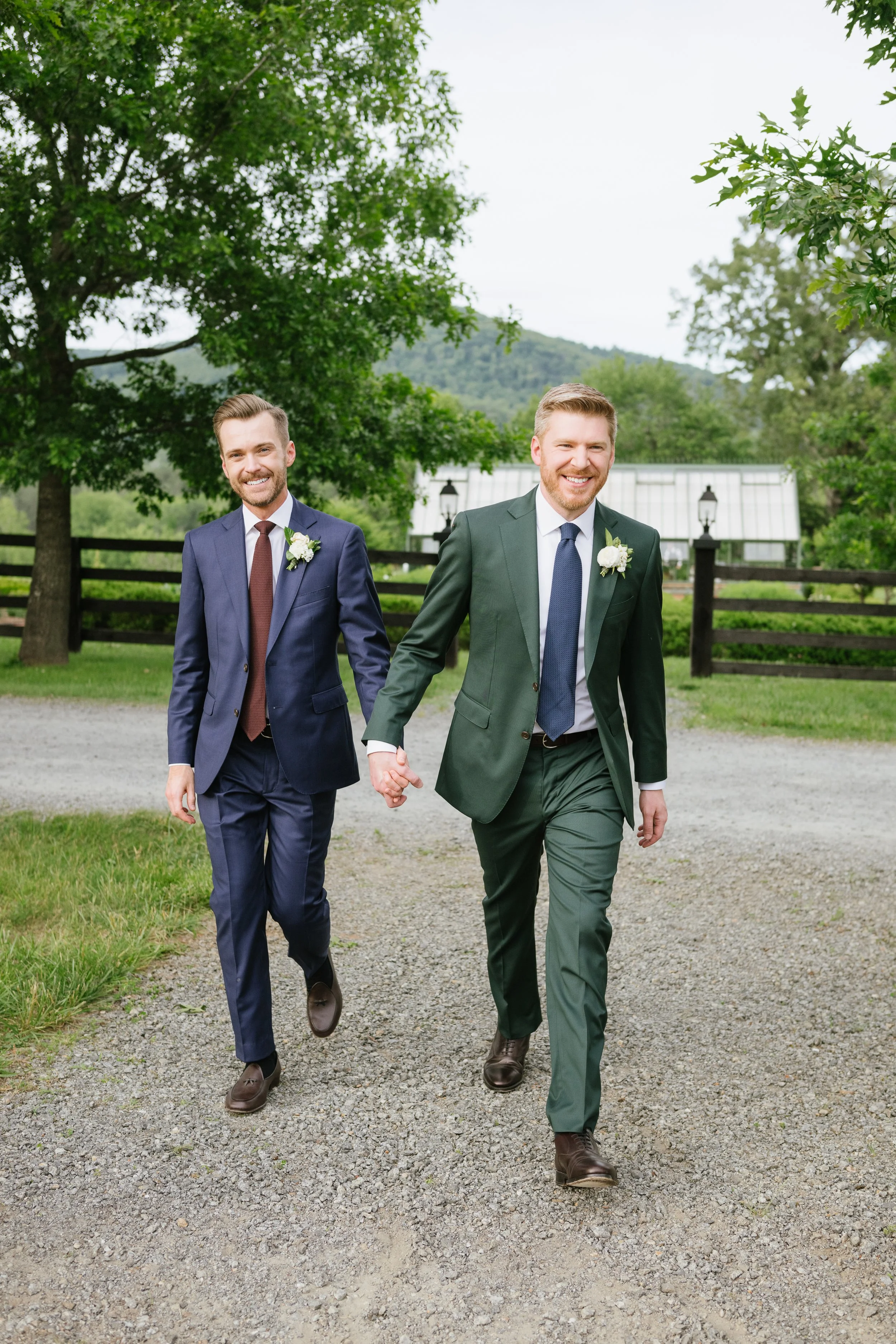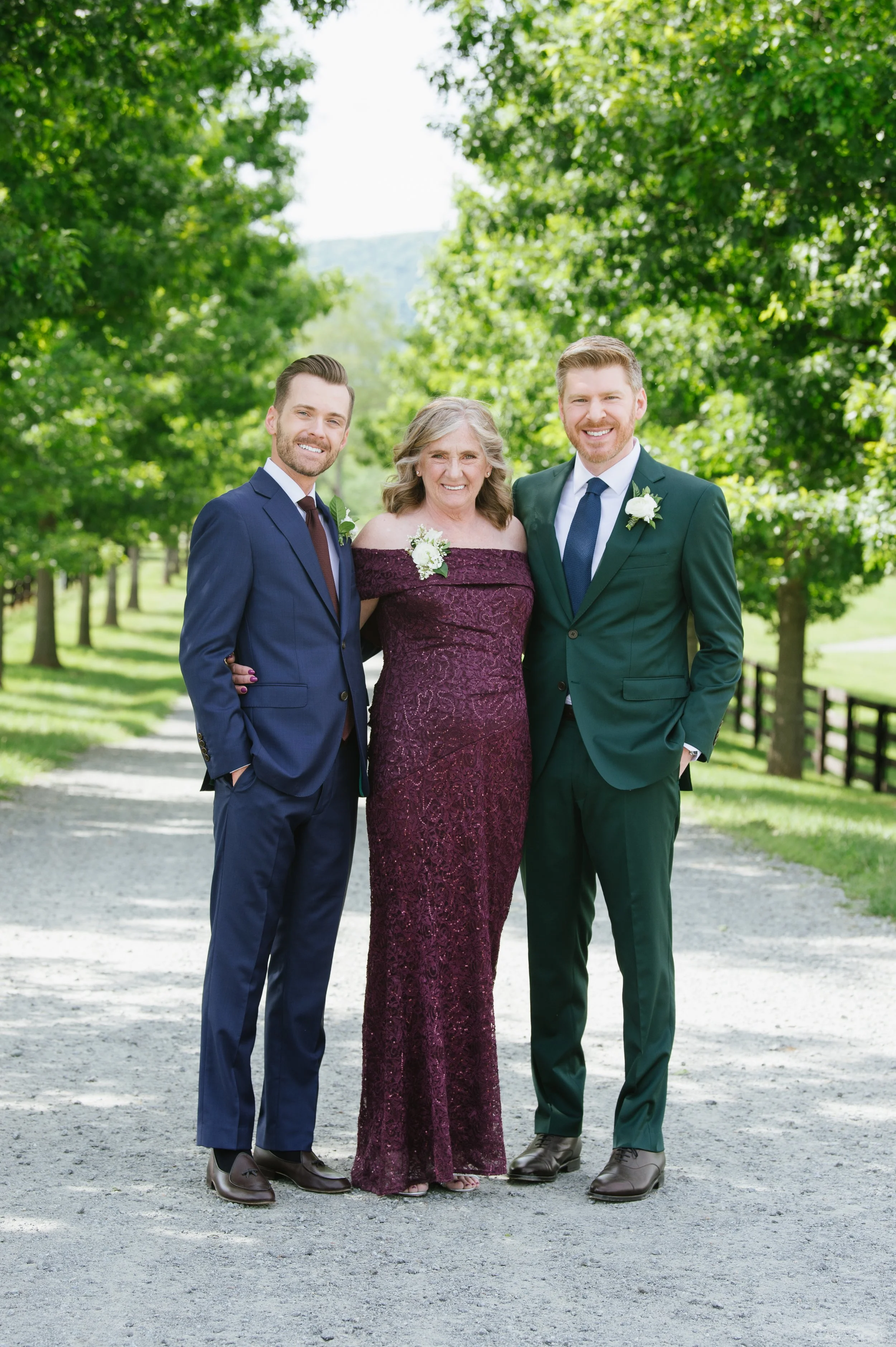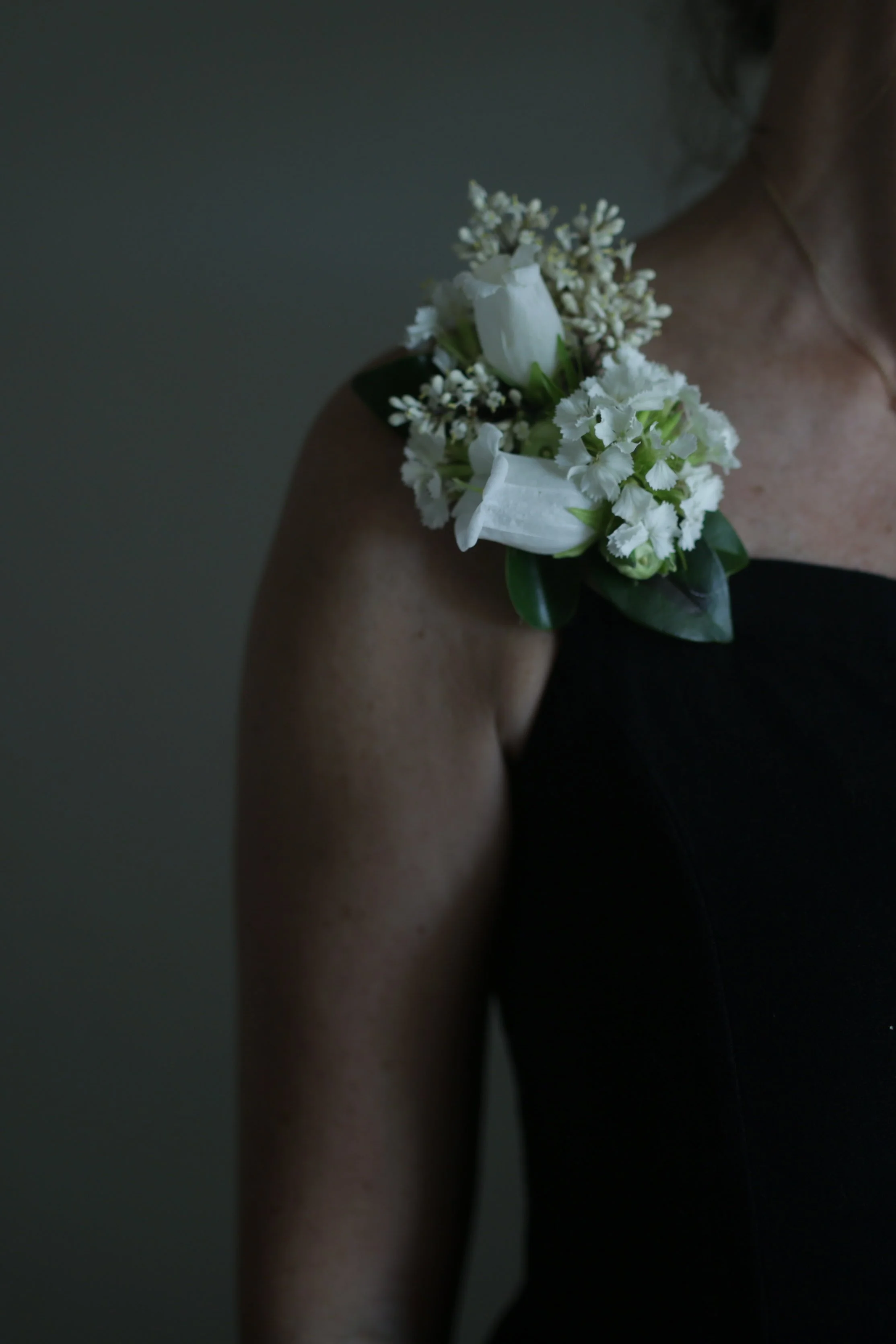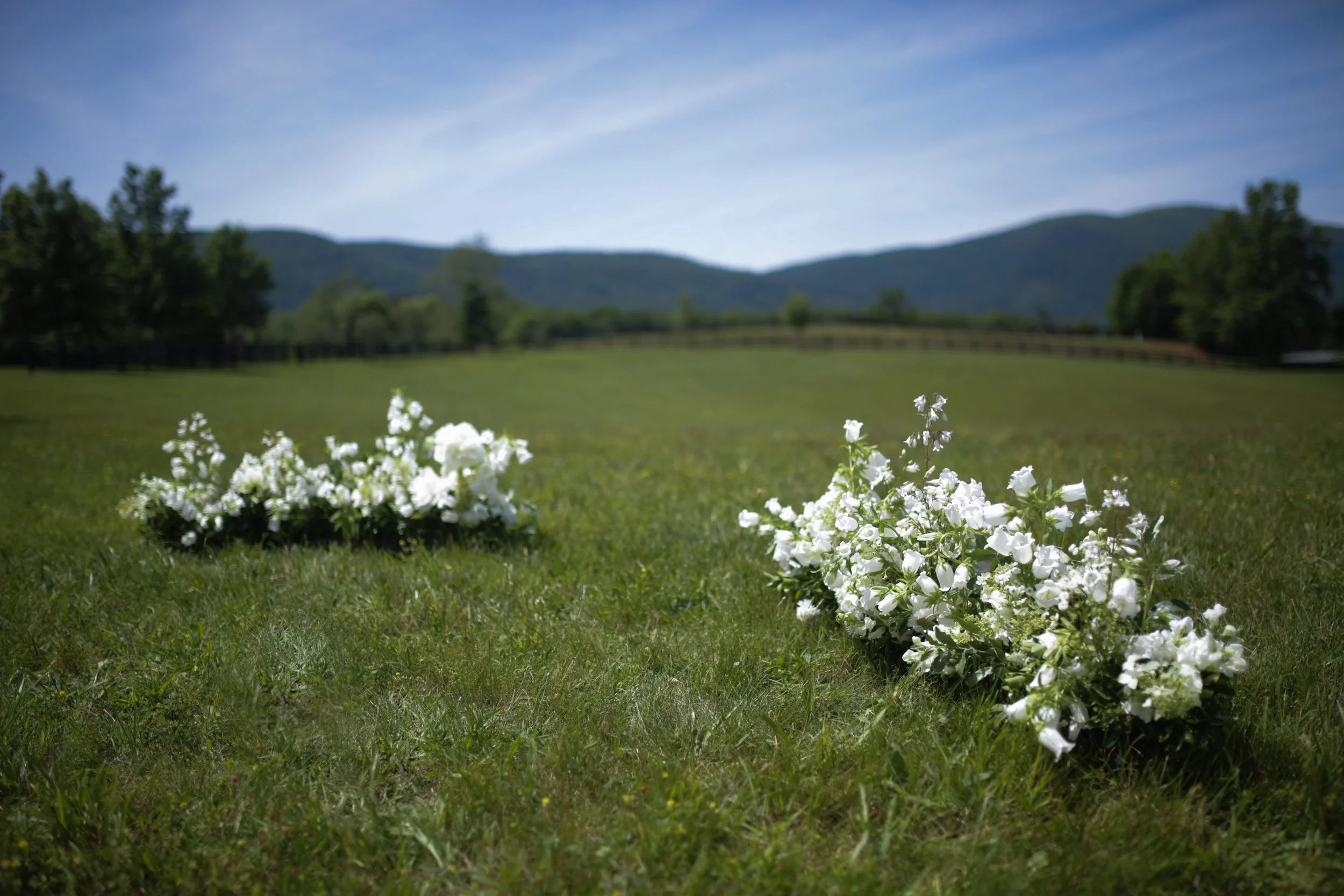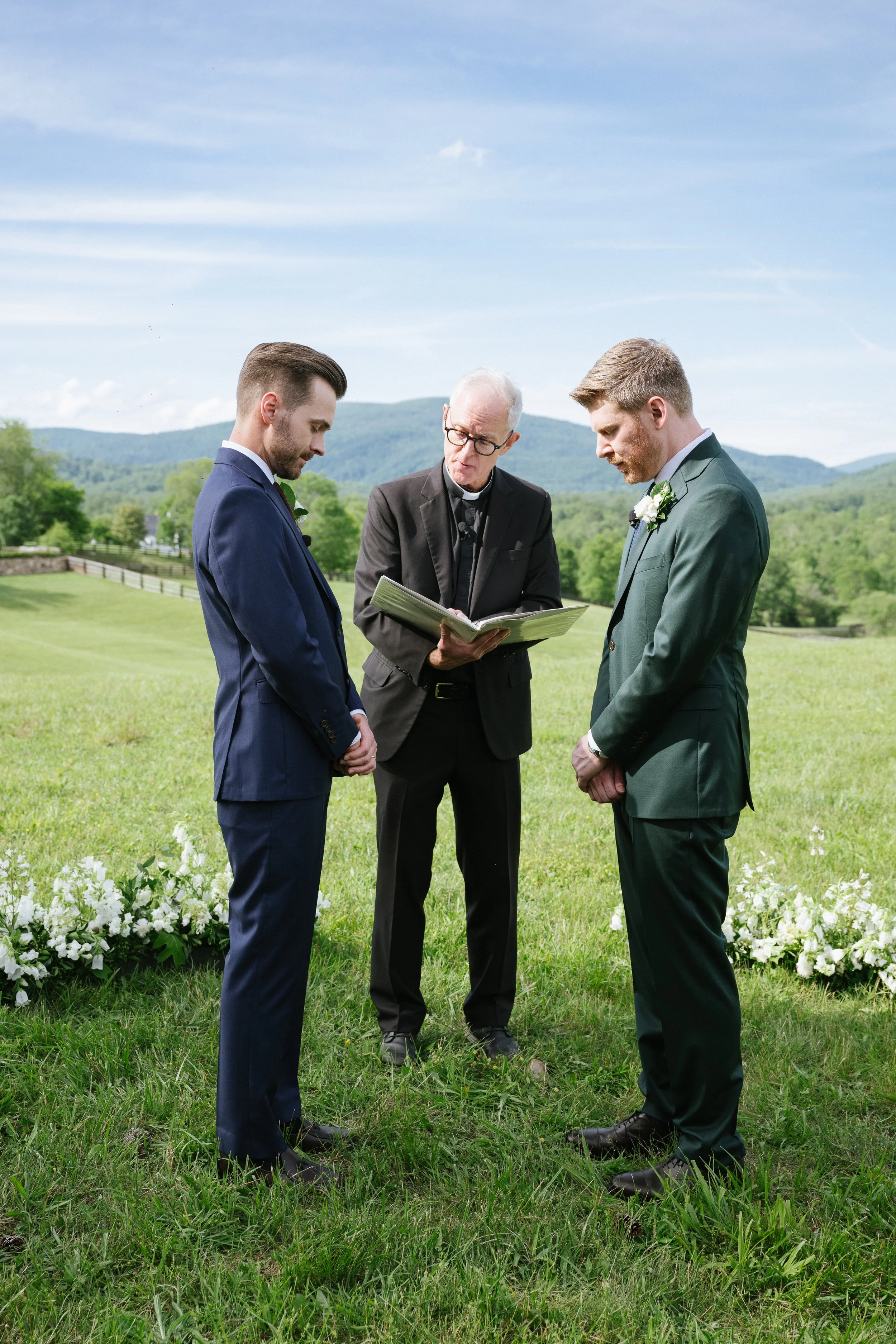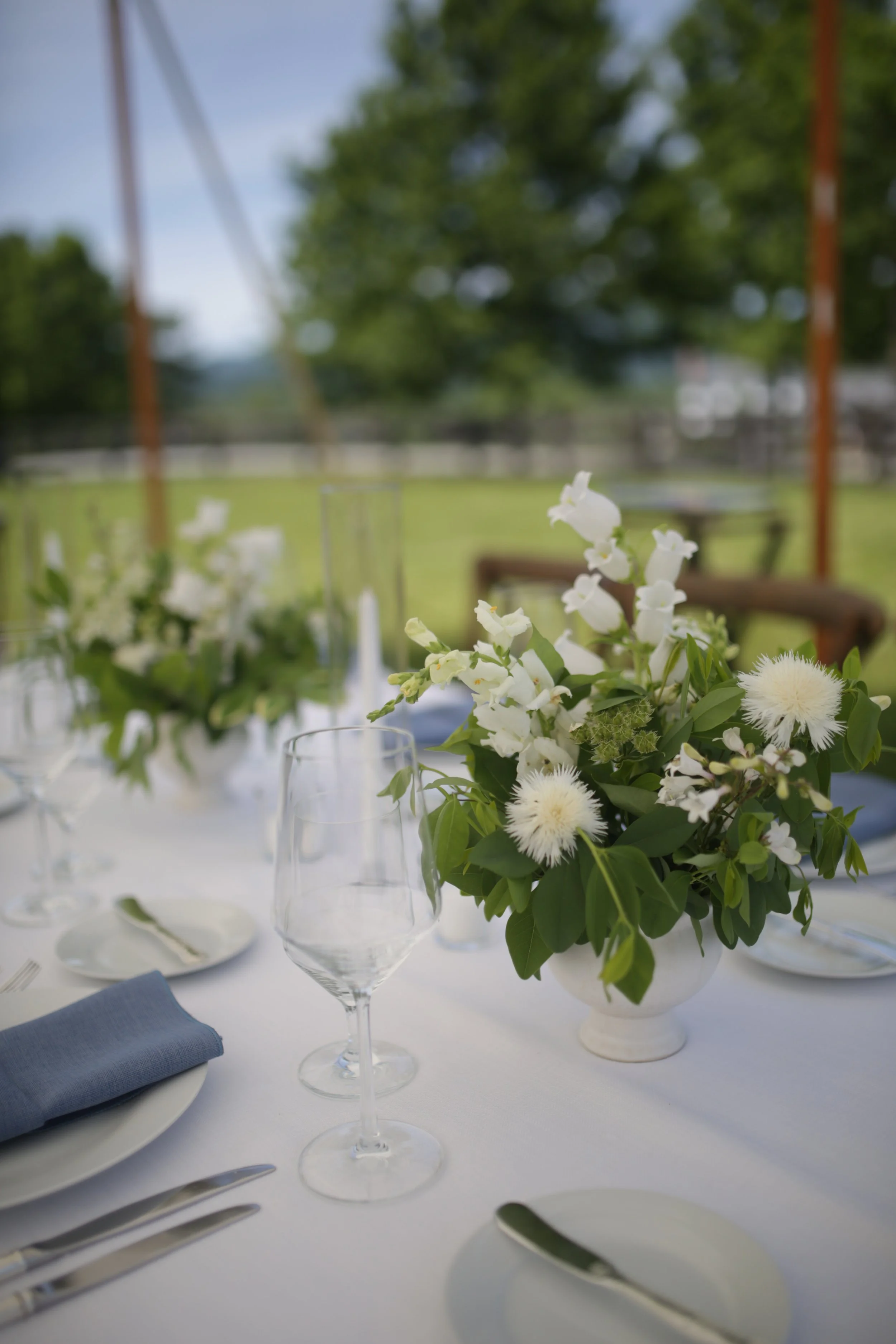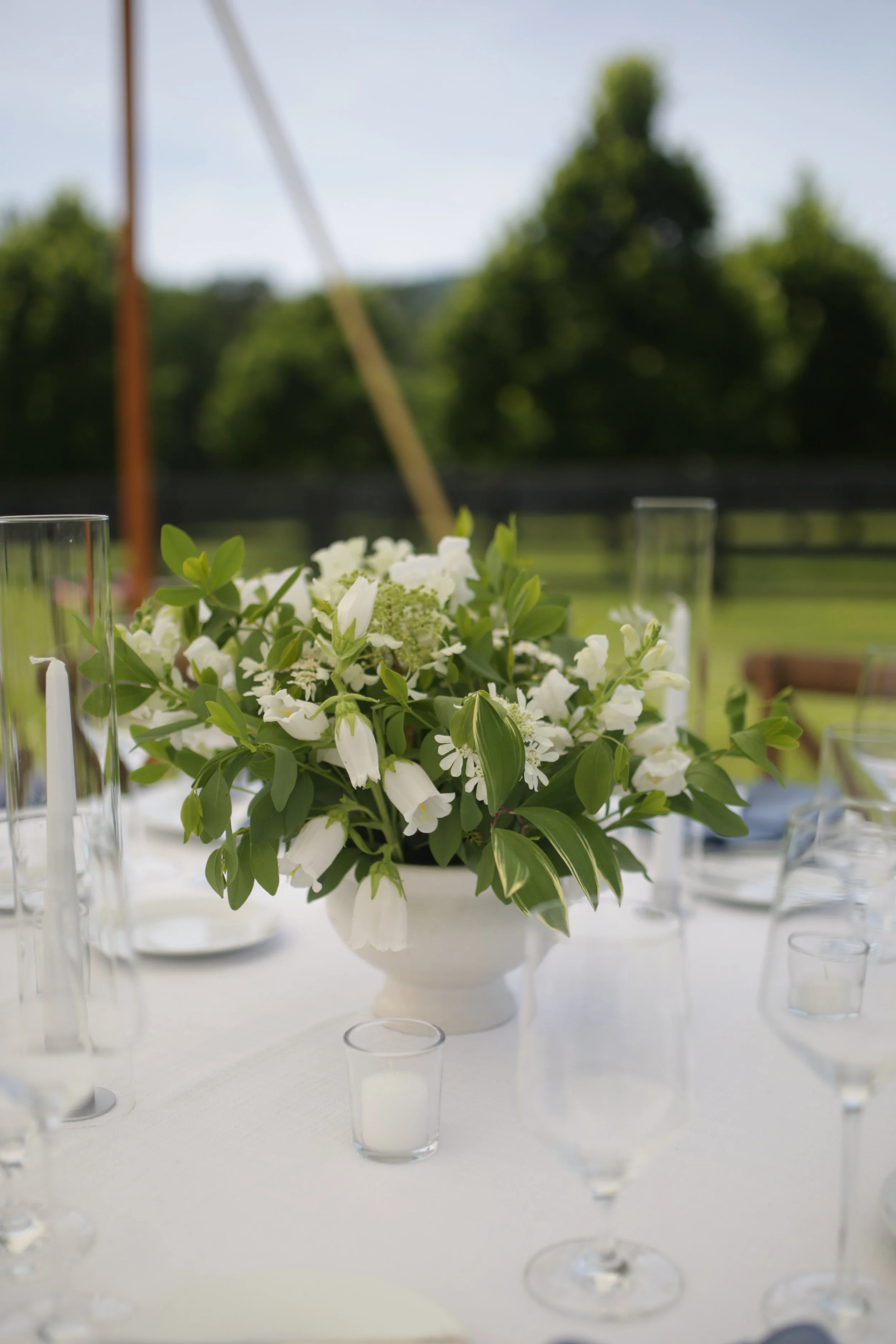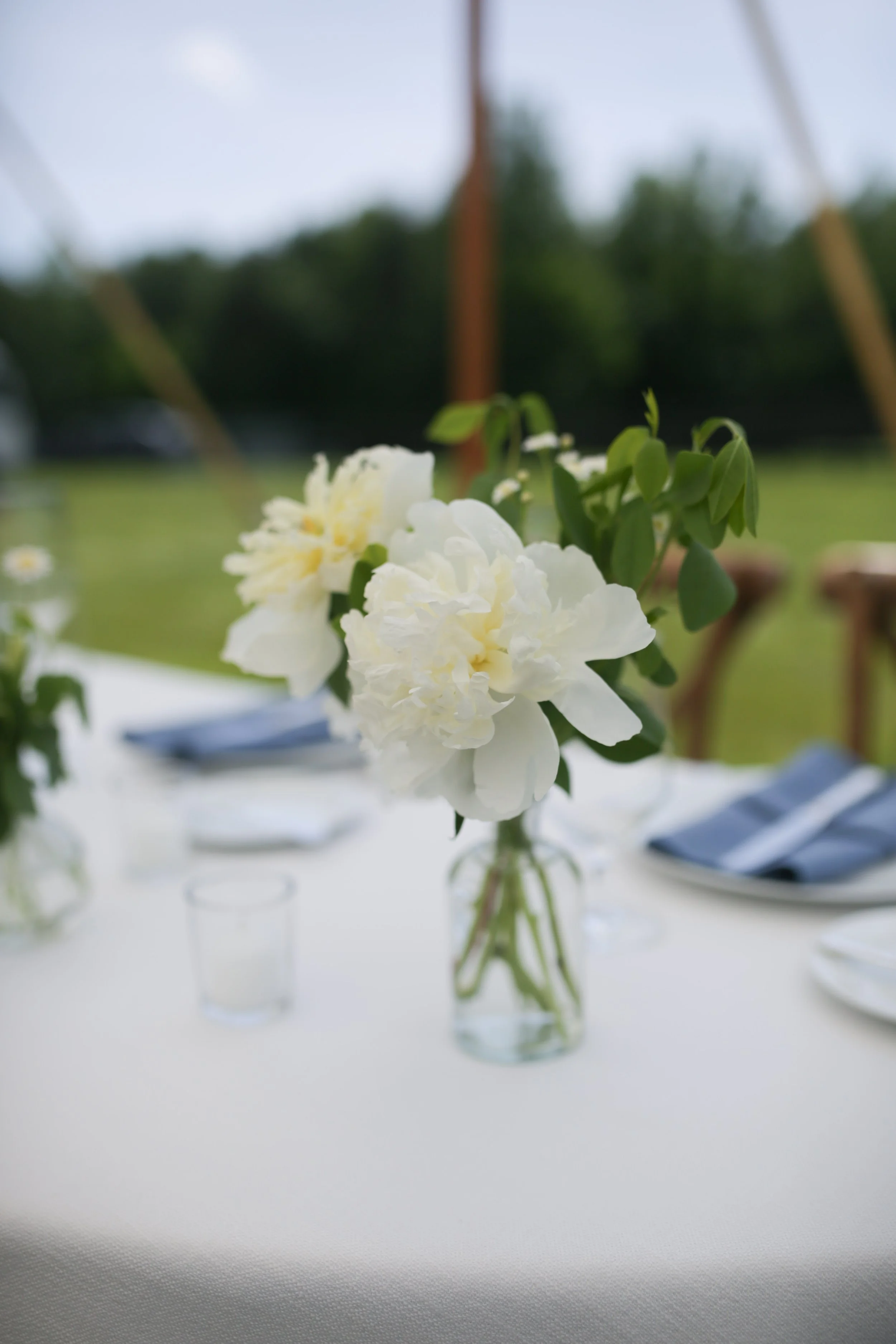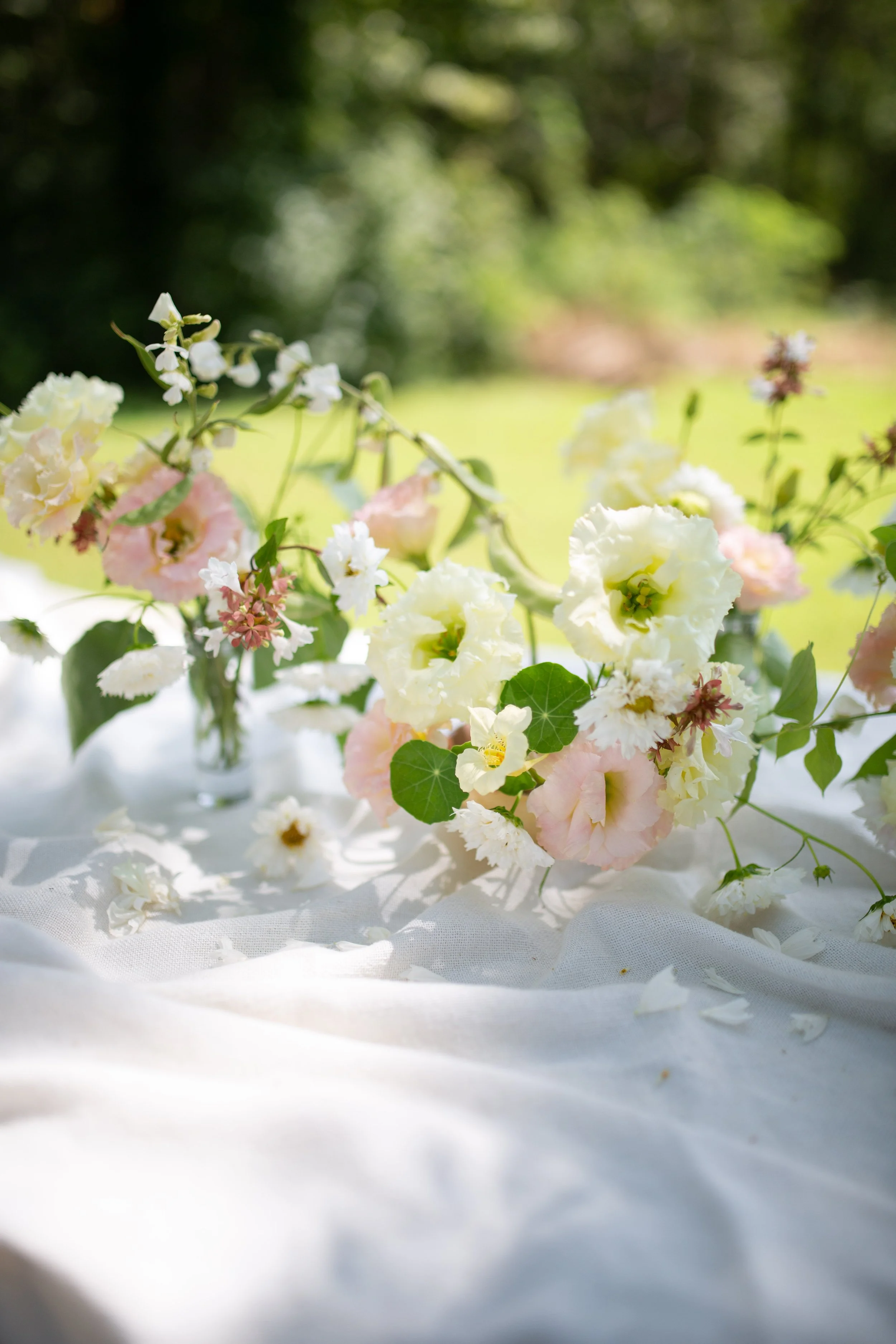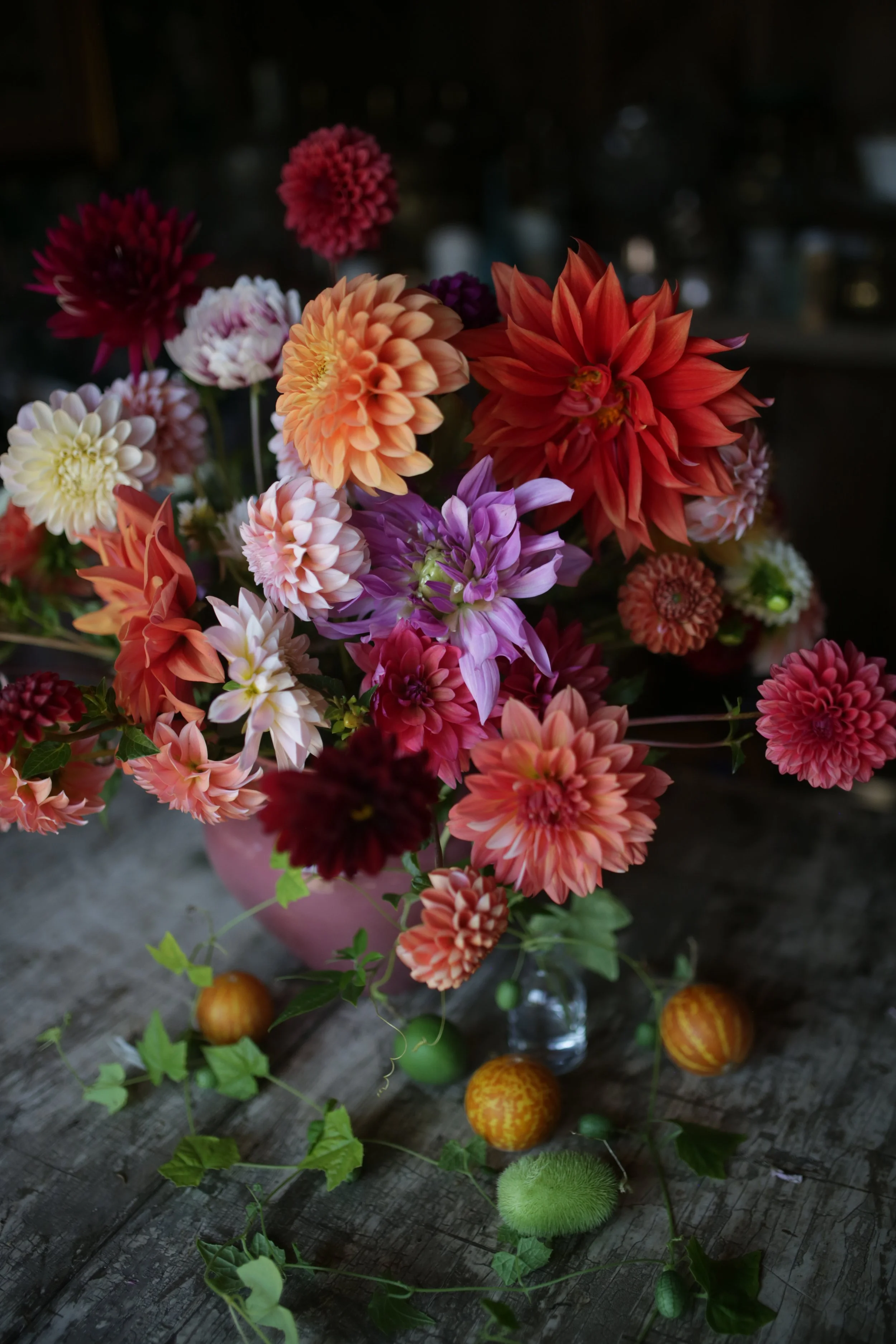Bulb Lasagnas
If you want to make the most of out a spring planted container (or whole garden of containers), bulb lasagnas are the best planting approach to take. Simply put, instead of doing one top layer of bulbs per pot, you choose bulbs that bloom at different times throughout the spring and plant them in layers in one container. It’s a game changer!
Click on the link below to learn more and also get some great recipes to get you started. Enjoy!
Bulb Lasagna Recipes For a Full Spring Show
P.S. If you landed here because you found me on Substack, thank you! If you haven’t seen me over on Substack, you can find me here - there you’ll find a video of me planting a bulb lasagna (the November 14 episode). It’s part of a free Flowering Fridays series that gives tips and tricks on flower growing and arranging every week. Hope to see you there!
Hellebores: the perfect shade loving flower of early spring
Hellebores, often called Lenten Roses, are one of the earliest perennials to bloom—sometimes even peeking through the snow!
Their delicate, nodding flowers and evergreen foliage make them a favorite among those who crave early spring color. The fact that they’re also shade loving plants that deer and other critters rarely touch make them a rare jewel in the flower growing world.
Below you’ll find information on how to grow them, favorite varieties, and tips for harvesting.
How to Grow Hellebores
Hellebores are hardy, low-maintenance plants that thrive in shady or partially shaded spots. Here’s what they love:
Soil: Rich, well-drained soil with plenty of organic matter.
Light: Partial to full shade. Morning sun with afternoon shade is ideal.
Water: Keep soil moist but not soggy. Once established, they’re fairly drought-tolerant.
Planting: Fall or early spring is the best time to plant them. Give them space—they don’t like being disturbed once settled.
How to Include Hellebores in Your Landscape
Hellebores are wonderful for putting into edges of woods and under deciduous trees. Because they’re early bloomers, they add interest to spaces that are blank in early spring, but they won’t compete with the gorgeous fall colors of trees such as maple and Gingko.
Hellebores will very slowly grow and spread to create a lush evergreen carpet where they’re planted! It may be a couple of years before you have a true harvest of blooms, but the wait is surely worth it - and they’ll continue to provide you with more and more as the years go on.
Hellebores can also be grown in pots, just be sure to use a large enough one that will allow it to expand, and leave it in the spot that’s shady or partially shady.
Top 3 Hellebore Varieties to Grow
Helleborus orientalis (Lenten Rose)
A classic variety that naturalizes well, producing large flowers in shades of pink, purple, and even near-black.Helleborus 'Winter Jewels' Series
This series is known for its unique color patterns—mottled, double, and speckled blooms in purples, pinks, and whites.Helleborus 'Ivory Prince'
Compact and tidy, this variety produces creamy white blooms with hints of pink and green, perfect for containers or borders.
How to Harvest Hellebores in Spring
Hellebores make beautiful, long-lasting cut flowers—if harvested correctly. Here’s how:
Wait until the blooms mature – Look for flowers where the stamens have dropped and seed pods are starting to form. Immature blooms wilt quickly when cut.
Cut at the base of the stem using clean, sharp scissors or garden snips.
Condition the stems by placing them in warm water for several hours before arranging them in a vase.
Tip: For longer vase life, sear the ends of the stems with boiling water or a flame for a few seconds, or use a flame to singe the bottom of the stem.
An early spring bouquet featuring hellebores as the outer edge ingredient.
Whether you're a seasoned gardener or just starting out, hellebores are an easy-to-grow flower that provide you with a wonderful way to add beauty to your early spring garden. Give them the right spot and a little patience, and they’ll reward you with years of graceful blooms!
Real Wedding Inspo, A la Carte Style
I felt so lucky to be the florist chosen for Ron and Dalton, two of the kindest souls who were married at the gorgeous Mount Fair Farm (with a greenhouse that made me green with envy).
Dalton and Ron chose the timeless color scheme of green and white, and they fully embraced the a la carte shop and the seasonal, all locally grown model that was used to create their pieces. I loved the way they repurposed the floral runners from the ceremony site at the dance floor - and everything else about their day.
Scroll on down to see the floral highlights and see just how elegant using only seasonal and local flowers can be (and visit The A la Carte Shop to order pieces for your own events, no matter how large or small).
Two of my favorite boutonnieres to date. (photo cred: Jen Fariello)
Ranunculus, gardenia, and sweet william: three of the lovliest May flowers.
The corsages were created to be clipped onto the gowns of the special ladies in Ron and Dalton’s life - no pins and less movement for the win!
A total of 6 floral runners created a small grounded arbor….
that was the perfect size to envelope the two of them and their officiant (photo cred: Jen Fariello)
Medium Arrangements were placed along rectangular tables amongst tall candles (which were given to guests to take home with them at the end of the night!)
(an up close of the medium)
Large arrangements graced a few circular tables, where there was more depth to cover and less candles.
And bud vases were used at the cocktail hour, sweetheart table, cake table, and the bar.
The floral runners, round 2: they framed the stage perfectly! (photo cred: Jen Fariello)
July Flower of the Month: Lisianthus
Flower of the Month (July)
Eustoma, commonly known as Lisianthus.
The flower that looks like a rose but isn’t a rose and requires a lot less effort to grow.
As someone who adores roses but just doesn’t have the time or patience (or an 8 foot stone wall to keep animals away) to grow them at scale, lisianthus is what allows me to have a fluffy rose like ingredient in design work without having to fret over them.
Deer and rodents avoid them, pests don’t seem to notice they’re around, and they aren’t phased at all by heat or drought. And as a cut flower, they can last for almost 2 weeks in the vase! A fact that makes one overlook the one downside : lisianthus isn’t a scented flower. Aside from that, they truly are the perfect rose substitute.
Growing lisianthus from seed does take practice, as monitoring temperature in a very precise way is required to get them started. Thankfully can be purchased in plug form if you wish to skip that step (no shame here in admitting that I do!), and planted out in very early spring to get a summer crop.
Harvesting Lisianthus in July may allow for a second flush to come in the fall, but please note that Lisianthus are not cut-and-come again flowers.
Therefore, if you’re going to include them in your flowering borders or landscape, it’s best to dot them in amongst longer blooming plants so their presence won’t be missed.
No matter what, they’re well worth growing and will make your indoor and outdoor spaces lovely.
What to plant in June
When June rolls around, it can feel a little bit like you’ve missed the glorious spring window to plant.
And yes, you may have missed the perfect window to plant trees, shrubs, and perennials (have no fear, the perfect fall window of planting is arriving for that soon), but you haven’t missed the opportunity to grow some beautiful flowers that have the two important qualities necessary for planting in June: they grow quickly and, once established, aren’t too bothered by heat and drought.
Below is the list of flowers you can start from seed or tuber now (if you’re reading this in early June), either in a seed tray/pot or directly into a prepared garden bed, and enjoy a harvest of flowers from August to the first frost.
Sunflowers
Let’s start with a caveat: the sunflowers that fit into the cut-and-come again category are the branching varieties. The single stem varieties that you tend to see in the large farm fields are one-and-done bloomers that are still fun to grow, but won’t give you as much full season interest as the branching varieties.
Personal favorite branching varieties include: Strawberry Blonde, Chocolate, Italian White, and Rouge Royale.
Planting sunflower seeds is super easy: simply plant about 1 inch deep and keep watered! Or, if you want to watch the magic unfold, these are great seeds for starting in wet paper towels kept in a plastic container and put into a sunny spot indoors before planting out.
Newly emerged sunflowers are favorites of slugs, so sprinkling some Sluggo or other wall natural/pet safe slug repellant around the area you’ve planted them in is a good idea.
Sunflowers are also favorites for furry creatures to nibble on, so netting or a cloche on top of young plants is a good way to keep them safe.
Zinnias
Zinnias come in so many shapes, sizes, and colors that it can be hard to choose which ones to grow. Brightly colored varieties are easily found in most any big box or local store, but the gorgeous pastel and newly bred varieties are best sourced online.
Personal favorites include the Queen Lime series, Zinderella Peach, and Oklahoma White, and the newly released Ballerina zinnia found via Johnny Seeds.
To plant zinnias, simply put the seed about 1” deep.
Cosmos
Word of caution with these beauties: if you don’t like flowers that have a tendency to flop with a rainstorm without tall staking, then these may not be the best choice for your garden. However, if you’re willing to deal with a little bit of floppiness, then there are shorter varieties of cosmos that have a better chance of bouncing back and staying full.
Just as with zinnias, simply plant the seeds one inch deep.
Taller varieties that I grow every year no matter the effort to keep them upright include Afternoon White, Seashells Mix, and Cupcakes Blush.
Shorter variety favorites include Apricot Lemonade and Xanthos.
Hyacinth Bean Vine
One of my forever favorite annual vines is Hyacinth Bean (either the white or purple varieties), for the fact that the vine is so incredibly full and lush, covering a fence/railing/wall in a short amount of time. It also produces beautiful flower shoots that turn into interesting bean pods.
The flower stems are excellent in bud vases, and young pods can be eaten raw. It’s recommended that mature seed pods be cooked thoroughly before consuming.
I like to soak the seeds overnight before planting, and then they’re covered with about an inch or two of soil when put into a seed tray or directly outdoors. Expect to see them emerge and grow very quickly! They’re a fun seed to grow, especially with young children (this plant gives Jack and the Beanstalk vibes).
Dahlias
Dahlia plants are typically grown via tubers (unless you want a bit a surprise mix, which can be grown via seeds), and the good news is that if you haven’t already purchased any, you can typically find them highly discounted at this point in the season.
A dahlia tuber produces an eye which then becomes a plant, and planting them is simple: place the tuber on its side as much as possible in a shallow hole. You want the tuber to be covered completely but not have more than an inch or two of soil on top, in order to prevent tuber rot.
It’s a good idea to not water the dahlia tuber until you see the first green shoot appear aboveground. Then, keeping the soil moist but not drenched is a good idea as it begins to reach maturity. After that, dahlias require a deep watering a couple of times a week unless it rains.
Dahlias often require staking, so it’s a good idea to go ahead and put a stake a few inches behind where you planted the tuber at planting time. That way, you won’t risk accidentally pieces the tuber and it’s ready to go when twine is required to hold the plant upright.
Dahlias planted in June should start producing flowers in mid-late August, and they will continue to put out more blooms the more you cut, all the way up to the first frost.
To learn more about dahlias and favorite sources, click here !
June Jobs for the Garden
Regarding that step about feeding your plants, below are the plant foods that I always keep in my wheelhouse.*
I use Plantone at my initial planting as a general fertilizer, Triple Phosphate on perennials dahlias once they really start to take off (it really does promote extra flowering in my experience), and Fish Oil is applied through watering 1x week on most annuals.
Moody Flowering Planter Recipe
As much as I love colorful flowers, there’s something about one with a dark and moody edge that always draws me in.
So when I found this beautiful Surfina variety called Heavenly Blackberries & Cream while browsing in Milmont Greenhouses (my favorite go to spot), I snatched it up and began searching for complimentary plants to create a sophisticated porch display.
Because Surfina is what I consider to be a “spiller,” (i.e. it will trail down the side of the pot), I knew I wanted to find a couple of taller plants for the middle of the pot, as well as a dramatically taller variety for a corner. I also wanted to find more spillers to make sure all sides had something spilling from it without it looking too uniform by getting all Surfina.
Here’s the plant list I came up with and how I chose it:
Ipomoea batatas, also known as Sweet Potato Vine, ‘Sweet Caroline Upside Black Coffee”
-this felt perfect as a complimentary spiller to the Surfine because it has a different texture and shape, but the tones were almost identical given that it has both green and dark maroon leaves
Coleus in ‘Wizard Mosaic’ and ‘Black Dragon’
-just as with the Sweet Potato Vine, these offered a nice mix of darks and greens, and their fluffy nature made it perfect for the back of the planter to add a soft wall for others to shine off of
Salvia in “Purple Volcano’ and ‘New Dimension Rose’
Salvias and have a nice fluffy leafed bottom that lovely spikes of flowers shoot out of all season long. The ‘Purple Volcano’ variety offers a beautiful dark foliage and deep purple flowers, whereas the ‘New Dimension Rose’ offers traditional green foliage with deep pink and purple spikes. The latter variety was a bit of a chance, given that sometimes pictures can be deceiving and the pink may be brighter than I want for the planter. The good news is that Salvias are perennials, so if I don’t like it in this planter, I can simply take it out and put it somewhere in the landscape to live and flourish for years to come.
Cordyline (Dracaena) Indivisa
This is what I call the thriller plant, aka something that stands out and makes you take notice. I like to off center taller flowers in arrangements and pots, so I naturally gravitated towards putting this in a corner. However, if I wanted more of a symmetrical look, I could have put this in the corner.
Nasturtium ‘Purple Emperor’
I was growing this from seed already, and it felt like the perfect ingredient to pop into the arrangement as another purple toned flower and spiller, given that it’s a longer/taller variety of nasturtium.
Here’s the final result! I can’t wait to see it really fill out and take shape this season.
-
November 2025
- Nov 14, 2025 Bulb Lasagnas Nov 14, 2025
-
October 2025
- Oct 14, 2025 Hellebores: the perfect shade loving flower of early spring Oct 14, 2025
-
July 2025
- Jul 29, 2025 Real Wedding Inspo, A la Carte Style Jul 29, 2025
- Jul 7, 2025 July Flower of the Month: Lisianthus Jul 7, 2025
-
June 2025
- Jun 2, 2025 What to plant in June Jun 2, 2025
- Jun 2, 2025 June Jobs for the Garden Jun 2, 2025
-
May 2025
- May 5, 2025 Moody Flowering Planter Recipe May 5, 2025
- May 5, 2025 May Flower Focus: Peonies May 5, 2025
-
April 2025
- Apr 6, 2025 April Flower Focus: Ranunculus Apr 6, 2025
- Apr 6, 2025 Planting dahlia tubers indoors Apr 6, 2025
-
March 2025
- Mar 2, 2025 March Flower Focus: Anemones Mar 2, 2025
-
February 2025
- Feb 27, 2025 Favorite Flowering Shrubs Feb 27, 2025
-
January 2025
- Jan 28, 2025 My Five Favorite Dahlia Forms (and how to incorporate them into your garden) Jan 28, 2025
-
December 2024
- Dec 11, 2024 Naturalistic Holiday Tablescapes Dec 11, 2024
- Dec 11, 2024 Planting a Bulb Lasagna Dec 11, 2024
-
September 2024
- Sep 29, 2024 The mistake that led to total garden failure - and how I fixed it. Sep 29, 2024
-
August 2024
- Aug 5, 2024 foraged greenery for August flower arrangements Aug 5, 2024
-
June 2024
- Jun 24, 2024 Four flower seeds to sow in June to enjoy a late summer harvest Jun 24, 2024
-
April 2024
- Apr 23, 2024 Four mosquito repellent plants to add to your patio Apr 23, 2024
-
March 2024
- Mar 25, 2024 My Garden Tool Must Haves Mar 25, 2024
- Mar 9, 2024 The best dry-able flowers for Virginia gardens Mar 9, 2024
-
February 2024
- Feb 29, 2024 The best flowering vines for Virginia gardens Feb 29, 2024
- Feb 27, 2024 For Virginia flower growers: Sourcing Perennials Feb 27, 2024
- Feb 9, 2024 Where to find incredible flower seeds Feb 9, 2024
-
January 2024
- Jan 31, 2024 Hardy Annuals Jan 31, 2024
-
December 2023
- Dec 13, 2023 Holiday Gift Ideas for Flower Lovers and Growers Dec 13, 2023
-
March 2023
- Mar 3, 2023 Flower Garden Documentaries to Inspire Mar 3, 2023
-
January 2023
- Jan 20, 2023 Valentine's Day Jan 20, 2023
-
January 2022
- Jan 12, 2022 Thoughts on Weddings Jan 12, 2022
- Jan 10, 2022 2021 Recap Jan 10, 2022
-
November 2021
- Nov 2, 2021 Growing Ranunculus Nov 2, 2021
-
March 2020
- Mar 17, 2020 Early Spring Planting In Virginia Mar 17, 2020
-
December 2019
- Dec 6, 2019 The Beginning Dec 6, 2019




